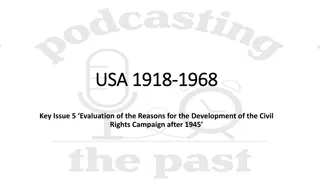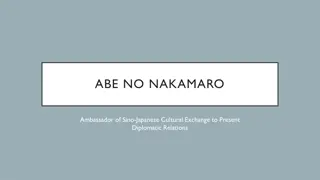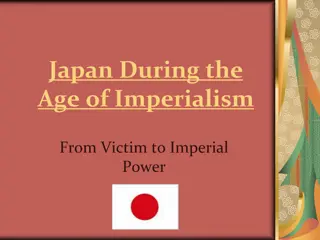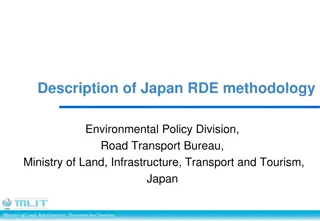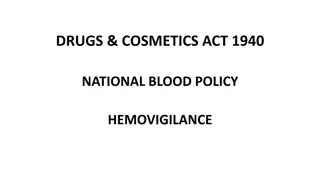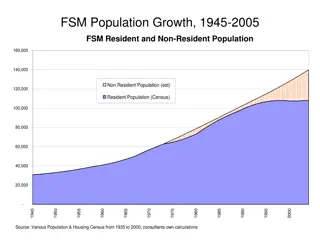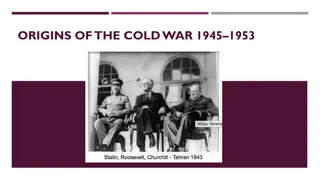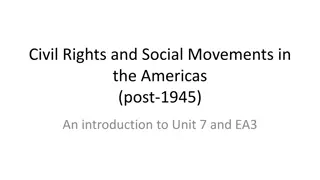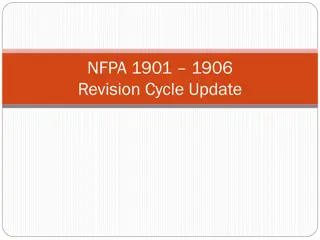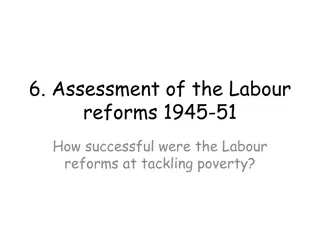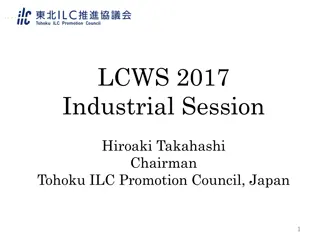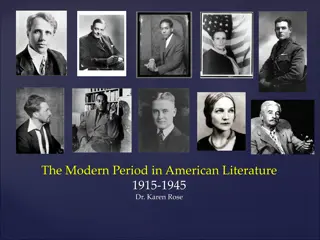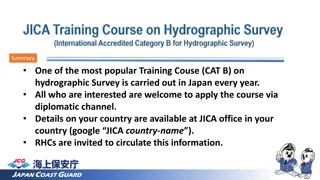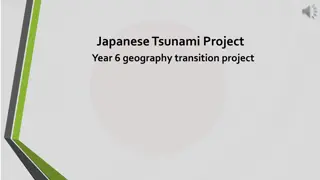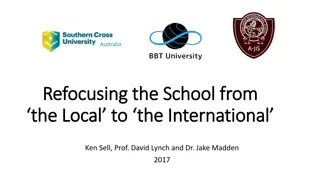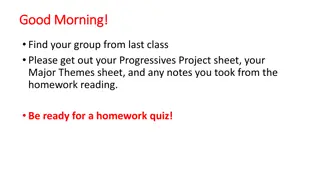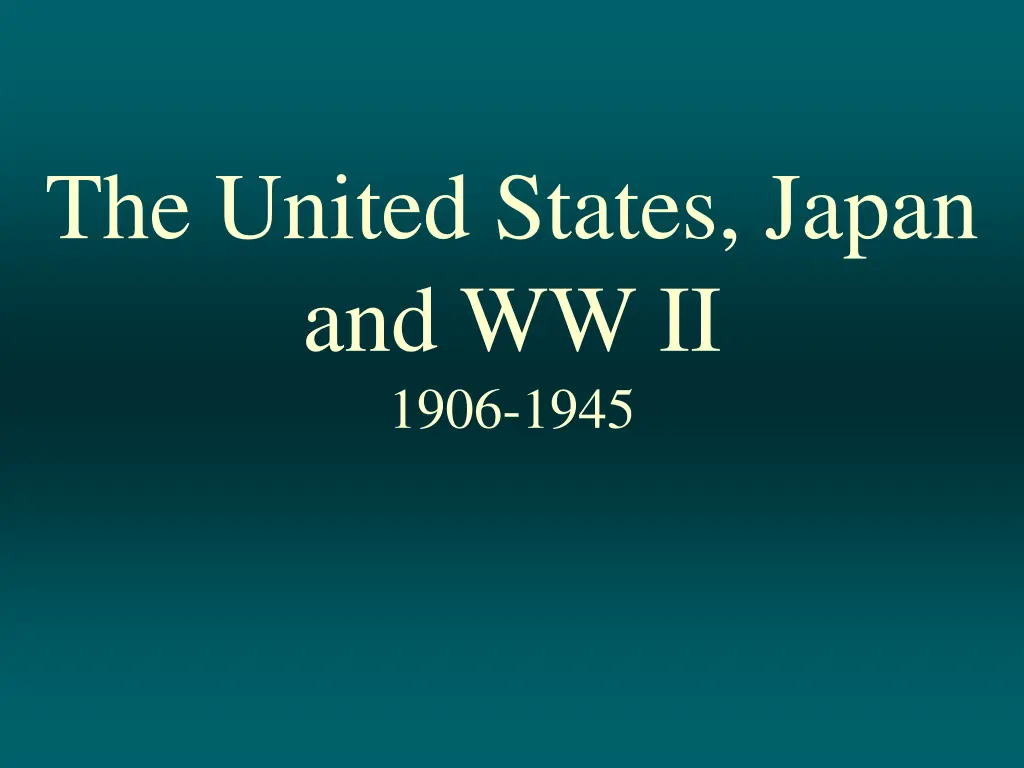
United States and Japan Relations: WWII History Overview
Explore the historical timeline of the United States and Japan during the years 1906-1945, covering topics such as immigration policies, the Washington Conference, Japanese invasions of Manchuria and China, and the US response to these events. Discover significant agreements, conflicts, and diplomatic actions that shaped the relationship between the two nations during this turbulent period.
Download Presentation

Please find below an Image/Link to download the presentation.
The content on the website is provided AS IS for your information and personal use only. It may not be sold, licensed, or shared on other websites without obtaining consent from the author. If you encounter any issues during the download, it is possible that the publisher has removed the file from their server.
You are allowed to download the files provided on this website for personal or commercial use, subject to the condition that they are used lawfully. All files are the property of their respective owners.
The content on the website is provided AS IS for your information and personal use only. It may not be sold, licensed, or shared on other websites without obtaining consent from the author.
E N D
Presentation Transcript
The United States, Japan and WW II 1906-1945
Japanese Resentment of USAs Immigration Policies Japanese school children segregated in San Francisco (1906)-- angering Japan. President Theodore Roosevelt talks San Francisco into changing decision. USA & Japan sign Gentlemen s Agreement (1907) limiting Japanese immigration of skilled laborers Immigration Act of 1924-excluded all Japanese immigrants
The Washington Conference 1921-22 Japan agrees to Nine-Power Treaty respecting China s territorial integrity, independence and the Open Door Policy -- equal trade rights for all nations Japan agrees to the naval 5:5:3 ratio with Britain and USA
Japanese Invasion of Manchuria Japan violates Nine-Power Treaty attacks mineral-rich Manchuria. (1931) Sets up puppet government in Manchukuo. (1932)
The Response to the Japanese Invasion of Manchuria League of Nations condemns Japanese aggression, recommends Japanese troop removal. Japan removes itself from the League of Nations US Secretary of State Henry Stimson issues USA s disapproval.
Japanese Invasion of China (1937) Japan attacks China July 7, 1937 USA extends loans to China for war material Permitted US volunteer pilots to fight for China Flying Tigers.
"Since the Flying Tigers first spread their wings in the skies above China, the enemy has learned to fear the intrepid spirit they have displayed in face of his superior numbers. They have become the symbol of the invincible strength of the forces now upholding the cause of justice and humanity. The Chinese people will preserve forever the memory of their glorious achievement." -- Generalissimo Chiang Kai-Shek
United States Response to Japan s Invasion of China USA places an embargo on petroleum and high-grade scrap metal (1940) American consumers and importers began to boycott Japanese goods
Japan Signs Tripartite Pact - 1940 Japan formally joins the Rome-Berlin Axis Germany Japan, Germany and Italy are now the AXIS Powers Italy Japan
Japan Attacks Pearl Harbor December 7, 1941 In less than three hours, 360 carrier-based planes attacked the American naval base in Hawaii Destroyed 19 ships, including five Battleships (2 more were damaged) Aircraft carriers escape destruction (they were on maneuvers at sea. More than 2,400 Americans killed Completely unites American people.
F.D.R.s Speech to Congress United States Congress Declares War on Japan December 8, 1941 Germany and Italy declare war on the USA USA officially at war against Axis powers.
The Battle of the Coral Sea (Longer Version (15:00)
Significance of the Battle of the Coral Sea (May 1942) First time stopping Japanese aggression Although the battle was a draw (tie), it saved Australia from being taken over. First time in war that it was fought completely from aircraft carriers
The Battle of Midway Longer Version (15:05)
Significance of the Battle of Midway Japanese Navy twice as big as US fleet going into battle US will destroy 4 (out of 5) Japanese aircraft carriers US loses 1 aircraft carrier US regains naval superiority
USA begins Island Hopping US strategy to defeat Japan by leapfrogging Japanese controlled islands of lesser importance. Goal is to get close enough to be able to attack the Japanese mainland.
Bombing of Hiroshima (BBC 4:20)
Hiroshima Casualties On the morning of August 6th 1945 an American B-29 bomber, the 'Enola Gay piloted by Capt. Paul Ebbits, dropped the first atomic bomb on Hiroshima called Little Boy. Between 60,000 and 80,000 people were killed instantly. Many died afterwards. The final death toll was calculated at 135,000.
Casualties at Nagasaki On the morning of 9 August, the US dropped a second, bigger atomic bomb, Fat Man. The original target was Kokura, but this was obscured by cloud so the bomb was dropped on nearby Nagasaki, an important port. About 40,000 people were killed instantly and a third of the city was destroyed. The final death toll was calculated at over 50,000.
Victory over Japan Day August 15th (Japan time) Emperor Hirohito accepted the allies terms and surrendered. On September 2, 1945 the Japanese officially surrendered to the US and its allies on the Battleship USS Missouri in Tokyo Harbor. Many countries claim either date as V-J Day
Japan Surrenders September 2, 1945

